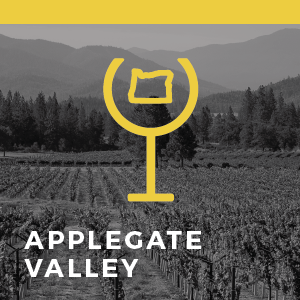Elkton Oregon
Established: 2013
Total Area: 74,900 acres (30,311 ha)
Planted Area: 305 acres (125 ha)
Predominant Soils: Clay loam
Predominant Varieties: Pinot noir, Pinot gris, Gewürztraminer, Riesling

Elkton Oregon downloads

Presentation preview
About
The Elkton Oregon AVA is situated 33 miles (53 km) inland from the Pacific Ocean. It is wholly within the Umpqua Valley AVA, which in turn lies within the larger Southern Oregon AVA. Elkton Oregon is the northernmost region in the Umpqua Valley. The Umpqua River weaves through the middle of the region, offering a cool afternoon breeze during the growing season.
Elkton Oregon vineyard soils are predominantly residual clay, silt loam soil, alluvial deposits and river terraces around the meandering Umpqua River. Clay soils retain water very well, resulting in less of a need to irrigate and lower yields.
In contrast to the rest of Southern Oregon, wines produced from this region are more often from cool climate varieties made in a lusher style, fuller in body with bolder fruit notes than those produced in the Willamette Valley.
Region History:
Winegrowing in Elkton dates back to the early 1970s when Ken Thomason began planting cool climate whites and Pinot noir. The first winery was established in 2000. Currently, there are four licensed wineries and 12 commercial vineyards totaling 96.5 planted acres (39 ha).











